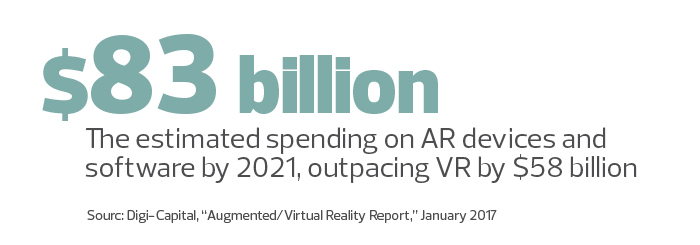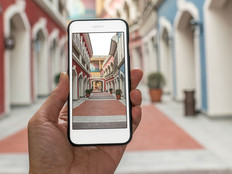AR Helps Businesses Transform the User Experience
Although virtual reality gets more attention, there’s a type of immersive experience that has the potential to play a significant role in how companies interact with customers going forward: augmented reality.
What’s the difference? While VR immerses a user in a different environment, AR adds virtual elements to the real-life environment. Companies are looking into AR to enhance the user experience of both employees and customers.
“We’re on the cusp of an era when augmented reality can take its place among the communications channels businesses and people regularly use,” says Jeff Ridgeway, U.S. head of Zappar, which helps businesses set up end-user AR experiences.
SIGN UP: Get more news from the BizTech newsletter in your inbox every two weeks!
AR Lets Customers Try Before They Buy
There are many ways companies can use AR to enhance the user experience for customers. For instance, IKEA’s app lets people take a picture of their room and place different catalog items into the picture to see how it looks.
Other ways a company might interface with its customers via VR, according to Jesse Johansen, senior game designer for creative studio Framestore, are through virtual try-ons (something already seen with online eyewear businesses), opportunities to operate a virtual version of a product, and interactions with a virtual employee or mascot.
“Using current tablet and phone solutions, many of the above examples are possible or already created by several companies,” Johansen says.

Another place where user experience and AR will likely intersect is customer service and acquisition.
“From ad campaigns that use branded face filters to AR apps that put digital products in the user’s environment, augmented reality is a new tool for marketers to get consumers excited and educated about the products they are offering,” says Tom Emrich, partner at Super Ventures and the coproducer of the AWE (Augmented World Expo). “AR can be used to measure, navigate and even put a face to a chatbot to assist customers in a much more natural, engaging and ‘human’ fashion.”
AR also has potential for meetings and collaboration, says Jason Welsh, managing director of extended reality at Accenture.
“B2B sales and immersive learning are probably the two most exciting opportunities for both SMBs and for enterprises,” Welsh says. He also points to conference calls where a user can be virtually placed “at the table,” for instance.
SMBs Should Create Digital Assets for AR Apps
While AR seems ready for prime time, mostly via mobile devices, it’s still a year or two away from exploding in popularity. So what should a company do now to make sure it can take advantage of advances in AR in the next 24 months?
“A high-quality, efficient 3D asset pipeline will be one of the biggest stumbling blocks for most SMBs,” Welsh says. That’s the place to begin: create assets that can be used effectively.
But, adds Emrich, it also might just come down to realizing AR isn’t about just one kind of device.
“Businesses need to understand that there are real opportunities to explore in projection AR, heads-up displays like those in automobiles, mobile and tablet AR, as well as smart glasses,” he says. “When thinking about an AR strategy, don’t lock yourself into a head-mounted, display-only mindset.”









